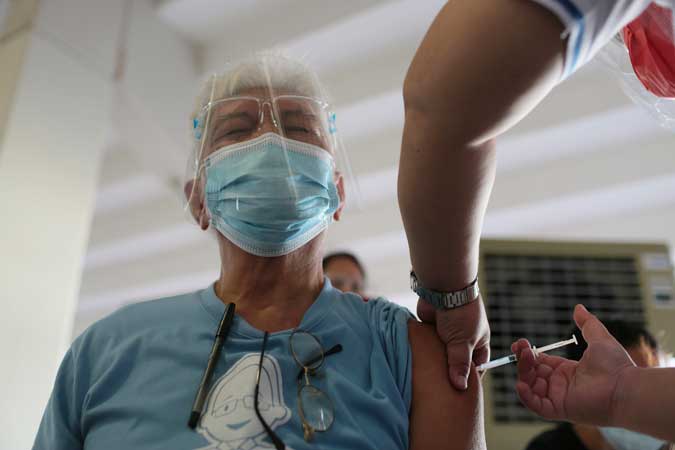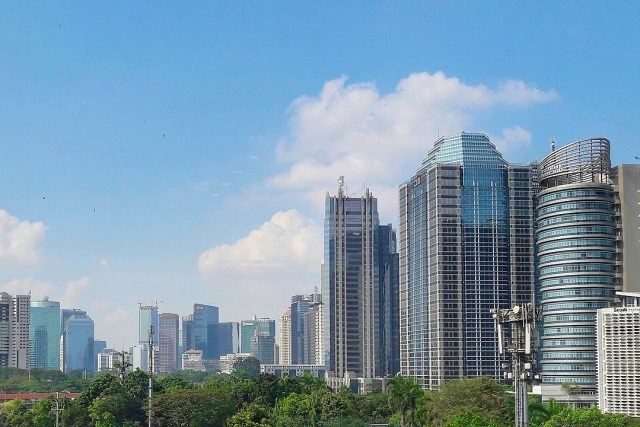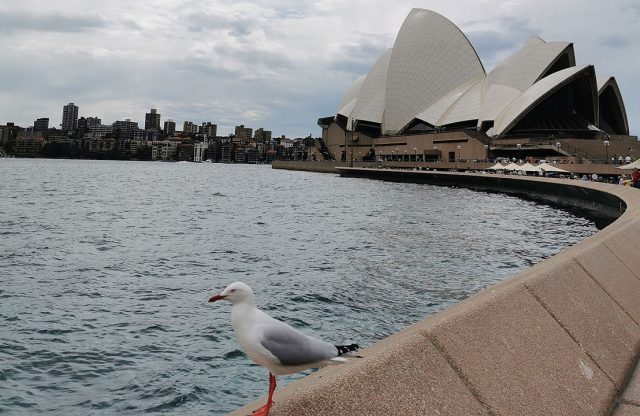(Part 1)
In this space a decade ago, I wrote about how President Fidel Ramos hit the ground running in 1992 to address the critical pain points plaguing our nation, citing in particular the power crisis that flat lined our economy. (“National leadership and our collective future,” January 2010, http://romeobernardo.blogspot.com/2010/01/natl-leadership-and-our-collective.html).
I noted that success in “putting the lights back on literally and in terms of business confidence set the stage for reviving investments and rallying public support behind other reforms to improve global competitiveness and our people’s lives.”
We are entering once again a threshold that “will define the course of our collective future for at least the next six years,” this time facing a more existential crisis of global proportions.
As an input to the programs of the national candidates and their teams, a few economists and subject matter expert friends in the Foundation for Economic Freedom, the Management Association of the Philippines, the Makati Business Club, the Philippine Disaster Resiliency Foundation, and I developed a 10-point wish list for the first 365 days of the new administration. I am pleased to share this with readers, abbreviated a bit to fit column space.
THE 10 POINTS:
1. Create a National Recovery and Resilience Council. Downscale the IATF (Inter-Agency Task Force for the Management of Emerging Infectious Diseases) and create a Health Security Council.
2. Rapidly upgrade the country’s healthcare system and nutrition.
3. Prioritize and address with utmost urgency the resolving of our worsening Learning Crisis.
4. Liberalize key segments of the economy.
5. Address the country’s future Energy Security.
6. Uphold the rule of law.
7. Revive the PPP (private public partnership) model of infrastructure development.
8. Craft Industry Roadmaps in the 10 sectors with the most potential for massive job generation.
9. Institutionalize labor flexibility.
10. Improve the ease of doing business and delivery of public services.
1. CREATE A NATIONAL RECOVERY AND RESILIENCE COUNCIL AND A HEALTH SECURITY COUNCIL
Create a National Recovery and Resilience Council (NRRC), headed by the National Economic and Development Authority (NEDA), and assisted by an Advisory Committee including the private sector, to manage the tradeoffs between job creation and social protection, versus COVID-19 mortality rates. Downscale the IATF and create a Health Security Council (HSC) that is composed of the Departments of Health (DoH), Interior and Local Government (DILG), Information and Communications Technology (DICT), and Budget and Management (DBM), and the Office of Civil Defense (OCD), with a mandate for emergencies, with oversight over pandemic control, and empowered to tap other government agencies and private sector entities as resources.
On the HRC and NRRC
a. Background: The creation of the HSC and NRRC assumes that we are moving into an endemic phase of COVID-19 in 2022. While there will be the threat of surges, this has to be mitigated by high levels of vaccination for the eligible population, and an easily mobilized surge capacity in public and private hospitals.
b. The HSC will maintain its pandemic control functions of PDITR (Prevention, Detection, Isolation, Treatment, Reintegration, Vaccination for COVID-19). Comprising the HSC shall be the DoH, OCD, DILG, DICT, and DBM. The body will have oversight of pandemic control and can tap any of the other agencies of government as needed, as well as ensure that preventive measures, epidemiological surveillance (databases and digital tech support) and treatment of cases are undertaken properly, nationwide. The HSC can tap private sector and the academe as resource persons.
c. The NRRC shall be led by the NEDA Secretary, as he/she would be best placed to assess and manage tradeoffs, as well as set the appropriate targets (e.g. job creation and minimum health, education, and social protection outcomes). Aside from the members of the private sector, member government agencies shall include those whose inputs are crucial towards economic recovery (e.g. Departments of Labor and Employment, Trade and Industry, Social Welfare and Development, Transportation, Education, etc.).
d. The HSC and NRRC report to the President and integrate policy decisions at the level of the President. The bodies can report at the Cabinet level, where policy decisions can be made. Critical to the structure is a cross-walk and constant communication between the two bodies, such that information is symmetric, and the best possible decision can be made at a rapid pace.
Immediate COVID-19 Response Measures
e. Increase vaccination rates to 80% of total national population ASAP by opening up pediatric vaccination down to five-year-olds, booster shots for the general population, and entering into Vax 2.0 as we shift from a Pandemic to an Endemic situation.
f. Encourage vaccination among the lowest socio-economic classes (e.g. families covered by the Conditional Cash Transfer program, CCT) by providing a “top up” or additional incentive to get vaccinated and take regular boosters.
g. Refine a Vaccine Incentives/Disincentives programs: entry into restaurants, cinemas, sports facilities, churches, etc. for the fully vaccinated, while restricting access for the unvaccinated; similar for employment.
h. Refine Alert Level criteria to make them clearer (e.g. focus on vaccine coverage, average daily attack rate, hospital bed utilization rate, rather than on cases).
i. Further ease mobility restrictions as applicable in transportation, schools, and other institutions and facilities.
2. RAPIDLY UPGRADE THE COUNTRY’S HEALTHCARE SYSTEM
Rapidly upgrade the country’s healthcare system to manage against an endemic situation by increasing hospital bed and manpower capacity, reforming the national insurance system, and guaranteeing a steady supply of vaccines and medicines. The healthcare program should include Nutrition/Malnutrition, which has significant impact on personal health, learning and education, and future productivity.
a. Upgrade public and private hospital capacity across all regions. This includes expanding current bed capacity and manpower complement to staff the beds. Provide significantly more financial benefits and incentives to attract and retain doctors and nurses.
b. Reform PhilHealth by overhauling its leadership; investing in claims, fraud, and billing technology; and considering options to privatize or outsource some of its functions to ensure efficient service delivery.
c. Ensure the continuous supply of two to three of the most trusted vaccines for boosters and therapeutic medicines for COVID, while establishing the appropriate logistics infrastructure, especially in the provinces to ensure proper deployment.
d. Improve data integration for case data, vaccinations, and testing, among other data points.
e. Increased emphasis on Nutrition. There should be a strong program to combat hunger, malnutrition, and stuntedness which can lead to irreversible and permanent damage on learning, personal health, economic productivity.
3. RESOLVE THE WORSENING LEARNING CRISIS
Prioritize and address with utmost urgency resolving our worsening Learning Crisis by restarting face-to-face classes, reconstituting the Education Commission, and providing connectivity support for remote learners.
a. Return to full face-to-face classes in all schools that are in non-high-risk areas, while adhering to the highest levels of health and safety guidelines by the start of SY 2022-2023.
b. Prioritize subsidies for connectivity in the 2023 Budget.
c. Immediately convene an action-oriented, multi-sectoral Education Committee 2 (EdCom 2), with a mandate to develop a roadmap to address the Learning Crisis by tackling foundational reforms; ensure Public-Private Complementarity; assuring and institutionalizing lifelong learning/upskilling.
4. LIBERALIZE SEGMENTS OF THE ECONOMY
Liberalize segments of the economy such as importation and foreign investment restrictions, with the aim of lowering prices to stave off inflation and improving competitiveness by lowering costs.
a. Liberalize as many inputs to production and items for consumption as possible, taking inspiration from the successful rice trade liberalization and looking into other items, such as corn, pork, and others. The aim of which is to manage inflation and structurally adjust the economy towards greater competitiveness.
b. Enact economic policy reforms, which include further easing up of restrictions to foreign investments in key industries (e.g. utilities), as well as considering other critical sectors (e.g. cement production).
i. Note: The following laws are in advanced stages of legislation and may be passed by this Congress by yearend — Amendments to the Public Services Act, Amendments to the Foreign Investments Act, Amendments to the Retail Trade Liberalization Act, RCEP (Regional Comprehensive Economic Partnership) ratification.
ii. Note: Several executive actions are needed once the above amendments are legislated:
• PSA: Appropriate administrative agencies to formulate sector-specific regulations;
• Foreign Investments Act: The Inter-agency Investment Promotion Coordination Council (IPCC) which will be created to integrate all promotion and facilitation efforts to encourage foreign investments including “foreign investment promotion and marketing plan”;
• Retail Trade Liberation Act: Department of Trade and Industry-Board of Investments to formulate IRR (implementing rules and regulations) consistent with the legislative objectives of the amendments to the law.
c. Develop and signal to financial markets a medium-term fiscal consolidation plan. Improve efficiency in spending through privatization or sale of government assets and functions, abolition, merger, and/or streamlining of agencies.
(To be continued.)
Romeo L. Bernardo was finance undersecretary during the Cory Aquino and Fidel Ramos Administrations. He is a Trustee/Director of the Foundation for Economic Freedom, Management Association of the Philippines and FINEX Foundation













